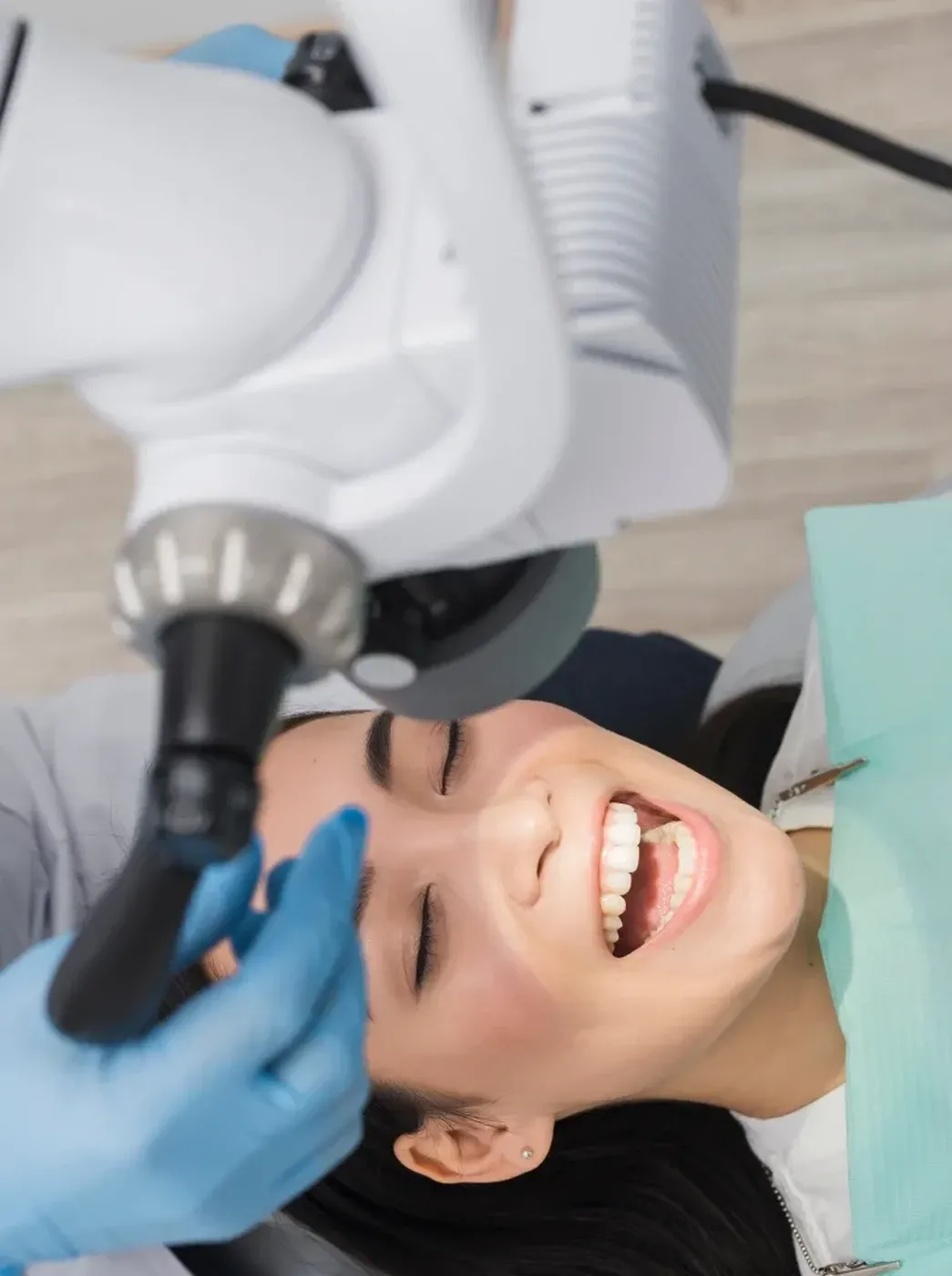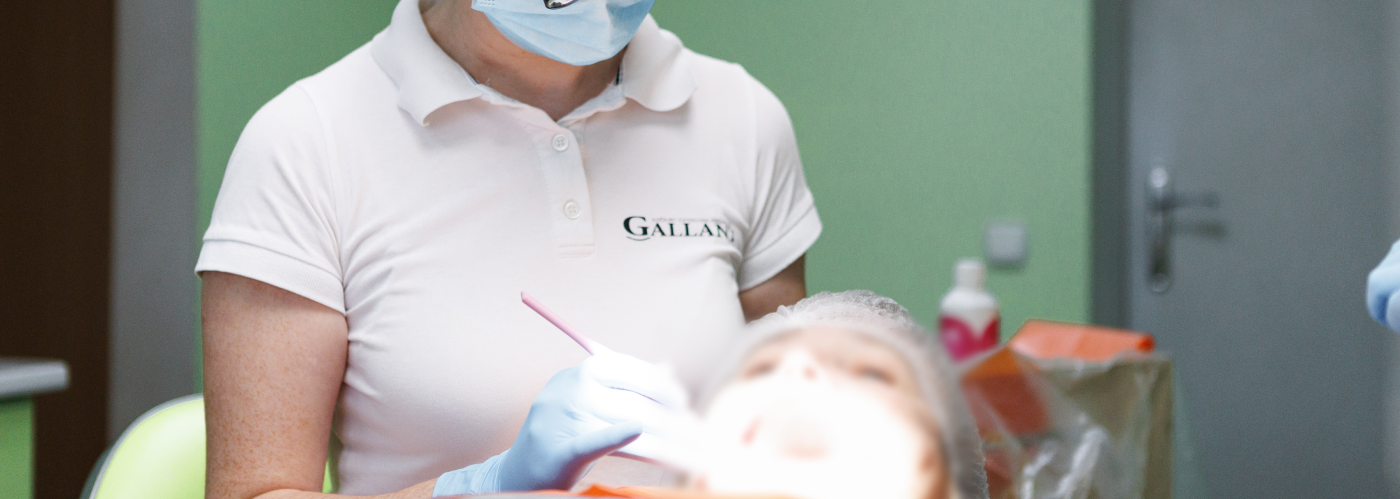
Mandibular anesthesia: An effective pain relief method
Mandibular anesthesia is a method of pain relief used in dentistry for procedures involving the lower jaw. It is applied during tooth extractions, endodontic treatments, and implant placement. As a result, sensitivity in the lower jaw and surrounding tissues is lost, ensuring patient comfort during the procedure.
This type of anesthesia is chosen when a large area needs to be numbed for dental interventions. Its main advantages are the high predictability of results and minimal risk of complications.
Features of anesthesia
Mandibular anesthesia should be used for all dental procedures that may cause discomfort to the patient. This applies to both standard cavity treatment and more complex interventions. In addition, the patient will need to remain in a horizontal position throughout the procedure due to the risk of losing consciousness.
Before giving the injection, it is important to treat the injection site with a special anesthetic cream so that the patient does not feel pain and does not interfere with the dentist.
The application of mandibular anesthesia in dentistry requires precision, as even a small deviation can lead to numbness in the throat area and blockage of the auditory nerve.
This type of anesthesia numbs the following areas:
- the entire lower row of teeth on the side of the injection;
- gum mucosa and nerves;
- lips on the side of anesthesia.
The skin of the cheek, chin, and area around the mouth also temporarily loses sensitivity.
Anesthesia is necessary for procedures that may cause discomfort:
- cavity treatment of any complexity;
- root canal treatment;
- extraction of impacted teeth;
- drainage of abscesses in the upper and lower jaw;
- removal of sequestra (dead tissue areas);
- surgical intervention for tooth eruption;
- removal of cysts and tumors.
In addition, this method is used for jaw splinting after a fracture.
Techniques of administration
Inferior alveolar nerve block anesthesia can be performed using intraoral or extraoral methods.
Intraoral techniques include palpation and apodactyl methods. Extraoral methods involve injection under the zygomatic bone in various versions, under the lower jaw, and behind the jaw.
Let us consider in detail the methods used in dental practice.
With palpation
Before inserting the needle, the doctor examines and palpates the injection site to locate the temporal crest. Then the syringe is aligned with the first molar on the opposite side. Next, the specialist moves the needle about one centimeter above the chewing surface of the last lower tooth.
First, 1 ml of anesthetic is injected. The next injection is made at the level of the incisors. After the needle is inserted 2 cm deep, the rest of the drug is administered. This is how mandibular anesthesia is performed using the palpation method.
Advantages of palpation mandibular anesthesia:
- Thanks to anatomical landmarks, the injection site can be precisely located, minimizing the risk of complications.
- Complete anesthesia is achieved in 100% of cases, even with complex jaw injuries.
The anesthesia has a long-lasting effect.
After the anesthetic is injected, one half of the jaw is completely blocked, allowing the dentist to treat multiple areas at once.
Apodactyl method
In the apodactyl method of mandibular anesthesia, the doctor uses the pterygomandibular fold on the lower jaw as a reference point. The syringe is placed perpendicular to the premolars, or in another variant, opposite the first molar. The needle is inserted into the center of the pterygomandibular fold, then advanced to the bone, and 2 ml of anesthetic is injected.
Then the syringe is inserted from the other side at the level of the incisors. The needle is advanced only 2 cm, after which another 1 ml of anesthetic is administered at the injection point. The drug begins to act within 5–8 minutes.
The advantages and disadvantages of this method are similar to the first. However, the main difference is a higher likelihood of complications, as the nerve ending may not align with the anatomical structure of the pterygomandibular fold of the lower jaw.
Extraoral methods of mandibular anesthesia have numerous variations that have been improved over time. However, the main goal remains external numbing of nerve fibers.
Why choose Gallant
Gallant Dental Clinic guarantees a responsible approach to every patient, combining professionalism and modern technology to provide the best medical care.
We offer many advantages:
- Modern technology: we use the best equipment that allows for accurate diagnostics.
- Innovative solutions: examination results are stored electronically, making it easy to enlarge images and share files online anywhere in the world.
- Comprehensive approach: in addition to diagnostics, we provide dentist consultations, develop treatment plans, and perform surgical interventions without requiring additional visits to other institutions.
- Professional team: our doctors are experienced specialists who constantly improve their knowledge and skills to provide the highest level of medical services.
We invite you to undergo diagnostics at our clinic! We offer all types of examinations and treatments with high precision and safety.
By choosing Gallant, you receive high-quality service and solutions to any dental problems. Our specialists have extensive experience with various types of pathologies and diseases and are ready to offer an individual treatment plan tailored to each specific case. The professionals use only high-quality and modern equipment for the successful diagnosis and treatment of even complex problems.
Request a call
We will contact you to schedule a convenient time for your consultation and connect you with the right specialist
What treatments involve the use of mandibular anesthesia?
Mandibular anesthesia is used during preparation for dental implant placement, major surgical procedures on the lower jaw, and wisdom tooth extractions. Its effect covers a large area, ensuring patient comfort even during complex procedures.

What complications are possible after mandibular anesthesia?
After mandibular anesthesia, prolonged numbness may occur. Some patients may also experience difficulty opening their mouth following the procedure.

What is mandibular anesthesia?
This is a method in which an anesthetic is injected into the area of the mandibular nerve, allowing the entire half of the lower jaw—including the teeth, gums, lip, and chin—to be numbed. This type of anesthesia is used during tooth extractions, cavity treatments, crown placements, and other surgical procedures on the lower jaw.

What are the advantages of mandibular anesthesia?
- Effective pain relief
- Numbing of a large area
- Long-lasting effect

Testimonials
I recently received treatment at Gallant Dental Clinic. The atmosphere was excellent – the treatment was professional, high-quality, and painless. Natalia Ivanivna Verpeta, I sincerely thank you for your work. Your attention to detail is incredible – you work with teeth like a jeweler with a precious gem. Elegance and precision combined with a great sense of humour – simply outstanding. Highly recommend!
I’d like to express my sincere gratitude for the professionalism and attentive care of the medical staff! The treatment was quick, easy, and painless. They always explain everything in detail, take great care of the patient’s comfort, and work very gently. I’m completely satisfied with the result! Highly recommend 👍🔥


Request a call
We will contact you to schedule a convenient time for your consultation and connect you with the right specialist

Request a call
We’ll get back to you shortly!

Leave a Review
Your feedback means a lot to us!


